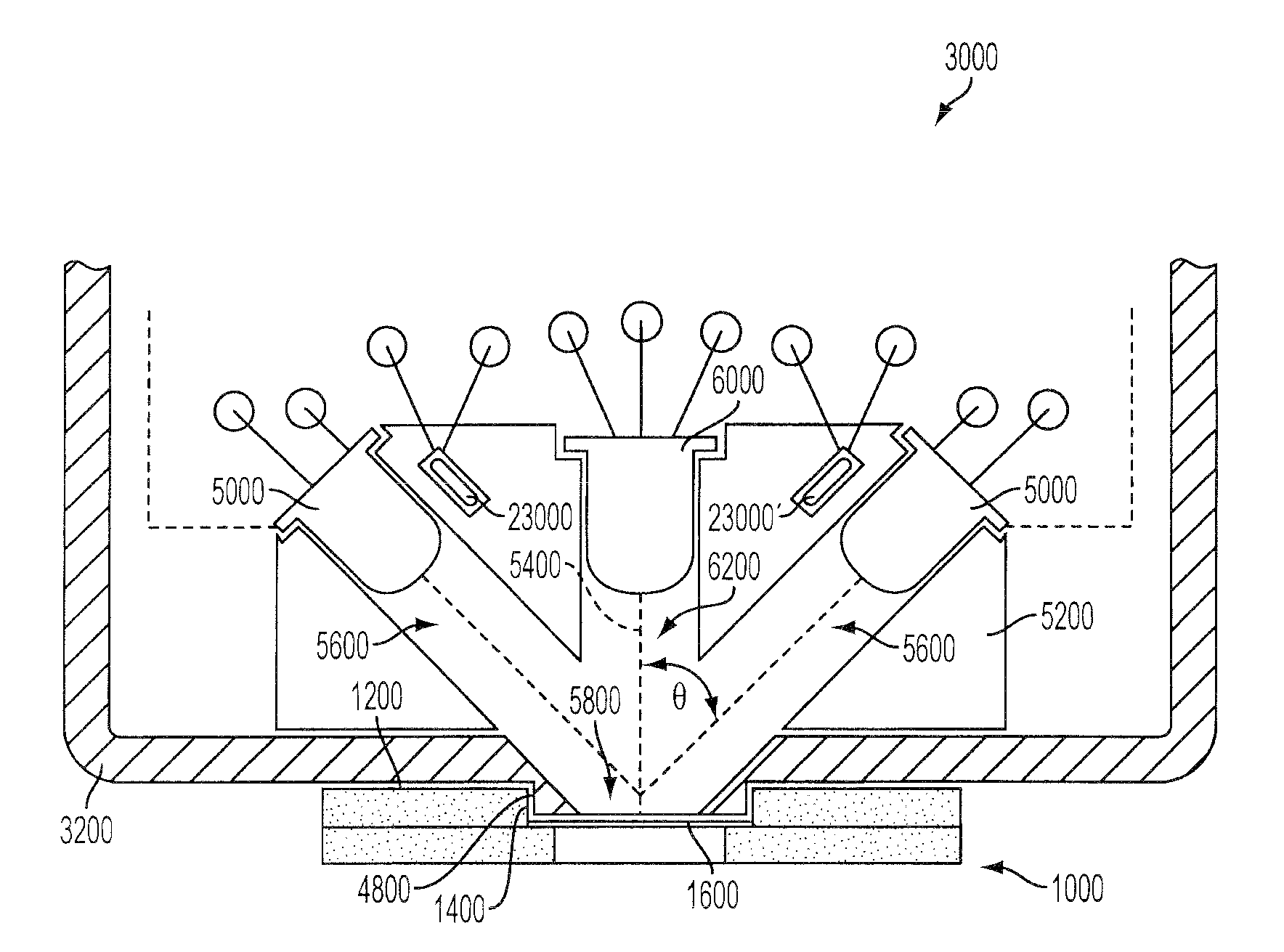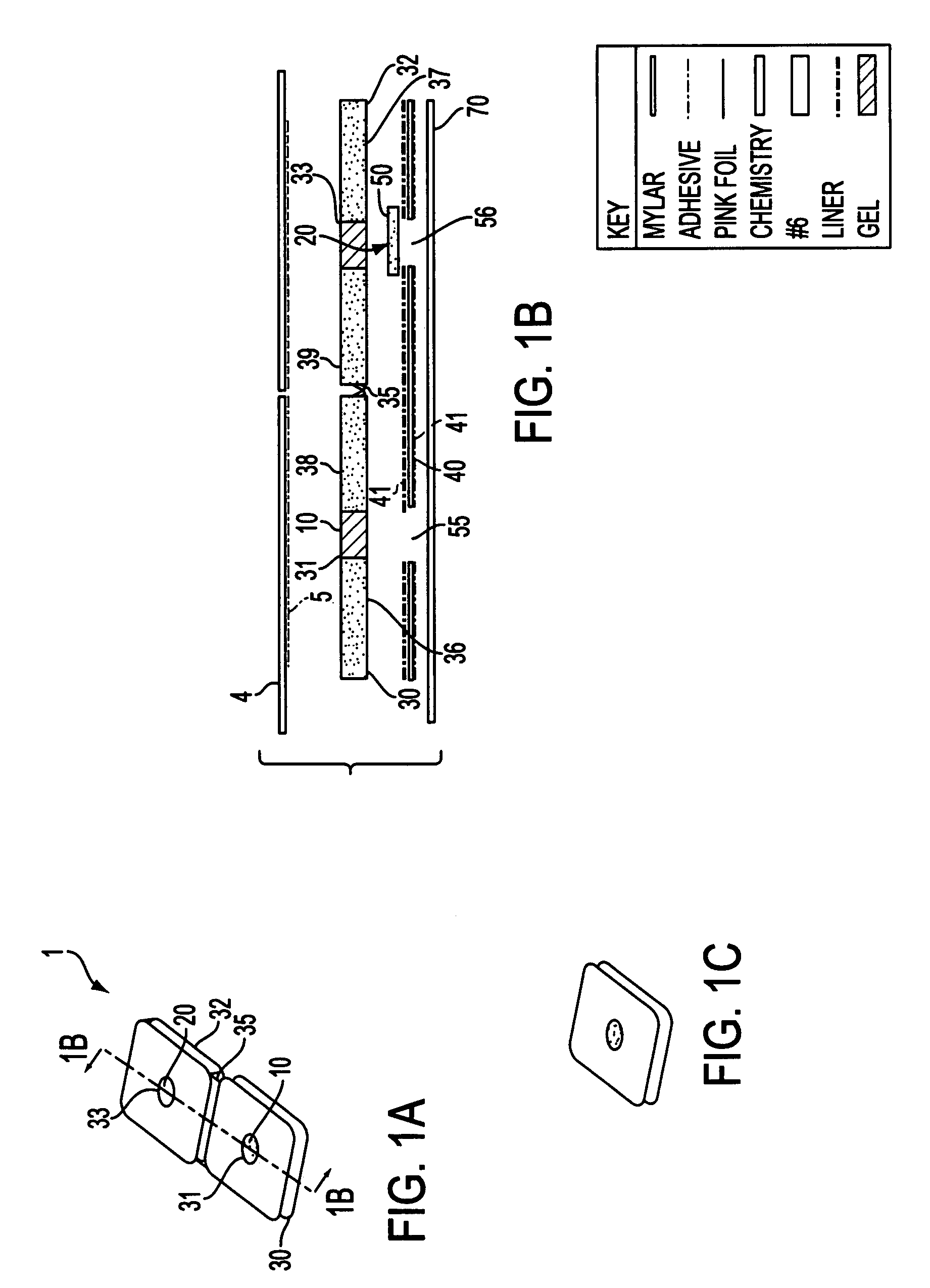Noninvasive transdermal systems for detecting an analyte in a biological fluid and methods
a biological fluid and transdermal technology, applied in the field of non-invasive transdermal systems and methods for detecting analyte in biological fluids, can solve the problems of not being easy to monitor blood glucose levels, not being easy to use by anyone, especially young children and the elderly, and being too expensive for commercial applications. , to achieve the effect of improving individual compliance, low cost and convenient us
- Summary
- Abstract
- Description
- Claims
- Application Information
AI Technical Summary
Benefits of technology
Problems solved by technology
Method used
Image
Examples
example 1
[0263]The following two figures represent data obtained with a glucose patch in accordance with the present invention. The glucose membrane is prepared similar to that described immediately above.
[0264]FIG. 11 shows results of a glucose tolerance test performed on a non-diabetic subject over a three hour period. These results in FIG. 11 show a high correlation between the glucose patch and a current popular finger stick method. In this example, the wipe is propylene glycol.
example 2
[0265]FIG. 12 shows the results of a series of tests that are performed on a Type I insulin dependent diabetic over a 21 day period. One sample is taken per day in a random manner—with no control over the sampling time of day or relation to the patient's insulin.
example 3
[0266]FIG. 13 depicts data from a series of experiments testing the linearity of the glucose patch reaction chemistry to increasing concentrations of glucose. Four glucose determinations are performed daily on a series of standards and the results correlated after four days of tests. These results show that the detection membrane is capable of measuring the minute amounts of glucose.
[0267]FIG. 14 depicts an actual calibration curve for the glucose patch. The data is depicted in FIG. 15A. A set of these glucose patches are evaluated with calibration standards using nine patches for each standard. The coefficient of variation averaged less than 4% with an r-value of 0.99 for the standard curve after 5 minutes of reaction time.
PUM
 Login to View More
Login to View More Abstract
Description
Claims
Application Information
 Login to View More
Login to View More - R&D
- Intellectual Property
- Life Sciences
- Materials
- Tech Scout
- Unparalleled Data Quality
- Higher Quality Content
- 60% Fewer Hallucinations
Browse by: Latest US Patents, China's latest patents, Technical Efficacy Thesaurus, Application Domain, Technology Topic, Popular Technical Reports.
© 2025 PatSnap. All rights reserved.Legal|Privacy policy|Modern Slavery Act Transparency Statement|Sitemap|About US| Contact US: help@patsnap.com



